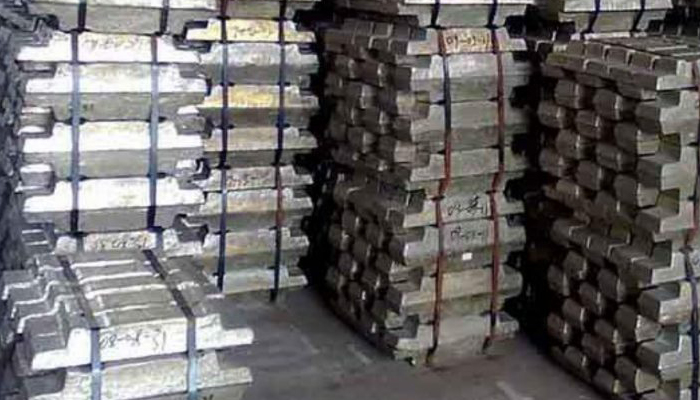Tin

(Sn; lat. Stannum) – an element of the 14th group of the periodic system of chemical elements, the fifth period, with atomic number 50 [5]. It belongs to the group of light metals.
Under normal conditions, a simple tin substance is a ductile, malleable and fusible shiny metal of silver-white color. Known modifications of tin: below α + 13.2 ° C, α-tin (gray tin) with a cubic diamond type lattice is stable, β-tin (white tin) with a tetragonal crystal lattice is stable above +13.2 ° C.
Tin was known to man already in the IV millennium BC. e. This metal was inaccessible and expensive, so products from it are rarely found among the Roman and Greek antiquities. Tin is (along with copper) one of the components of tin bronze, invented at the end or middle of the 3rd millennium BC. e. Since bronze was the most durable of the metals and alloys known at that time, tin was a “strategic metal” during the entire “bronze age”.
Tin polymorphic. Under normal conditions, it exists as a β-modification (white tin), stable above +13.2 ° C. White tin is a silvery-white, soft, ductile metal. When cooled, white tin turns into α-modification (gray tin). Gray tin forms crystals of cubic syngony. In gray tin, the β-Sn phase transition in α-Sn is accompanied by an increase in specific volume by 25.6%, which leads to the scattering of tin into powder.
“Tin plague” – one of the reasons for the death of Scott’s expedition to the South Pole in 1912. She was left without fuel due to the fact that fuel leaked from tin-sealed tanks hit by “tin plague.”
Some historians point to the “tin plague” as one of the reasons for the defeat of Napoleon’s army in Russia in 1812 – severe frosts led to the transformation of tin buttons on soldiers’ uniforms into powder.
The “tin plague” destroyed many collections of tin soldiers. For example, dozens of figures turned into dust in the storerooms of the St. Petersburg Museum of Alexander Suvorov – in the basement, where they were stored, the radiators burst in winter.
Tin and tin alloys are produced according to:
GOST 860-75 Tin. Specifications.
GOST 57772-17 Tin and tin alloys. Specifications.
TU 48-13-17-93 Tin wire. Technical conditions.
The range of products of the tin group:
Tin bars
VHF-000, O1, O1, O2, O3, O4
Form and packaging:
Pigs weighing about 25 kg packed in packages weighing no more than 1000 kg not high more than 500 mm tied with steel tape.
| Маrk | Sn, no more | As, no more | Fe, no more | Cu, no more | Pb, no more | Bi, no more | Sb, no more | S, no more |
|---|---|---|---|---|---|---|---|---|
| ОВЧ-000 | 99,999 | 1E-04 | 0,0001 | 0,00001 | 0,00001 | 0,000005 | 0,00005 | – |
| О1 пч | 99,915 | 0,01 | 0,009 | 0,01 | 0,025 | 0,01 | 0,015 | 0,008 |
| О1 | 99,9 | 0,01 | 0,009 | 0,01 | 0,04 | 0,015 | 0,015 | 0,007 |
| О2 | 99,565 | 0,015 | 0,02 | 0,03 | 0,25 | 0,05 | 0,05 | 0,016 |
| О3 | 98,49 | 0,03 | 0,02 | 0,1 | 1 | 0,06 | 0,3 | 0,02 |
| О4 | 96,43 | 0,05 | 0,02 | 0,1 | 3 | 0,1 | 0,3 | 0,02 |
Wire from 0.5 mm to 8 mm; Bar from 8 mm to 15 mm;
Form and packaging:
Bar length 400 ± 20 mm. Tin bar is supplied in packs of 10-15 kg.
| Nominal diameter, mm | 0.5 | 0.8 | 1.0 | 1.5 | 1.8 | 2.0 | 3.0 | 5.0 |
|---|---|---|---|---|---|---|---|---|
| Maximum deviation, mm (±) | 0.05 | 0.05 | 0,05 | 0.10 | 0.10 | 0.10 | 0.10 | 0.15 |



